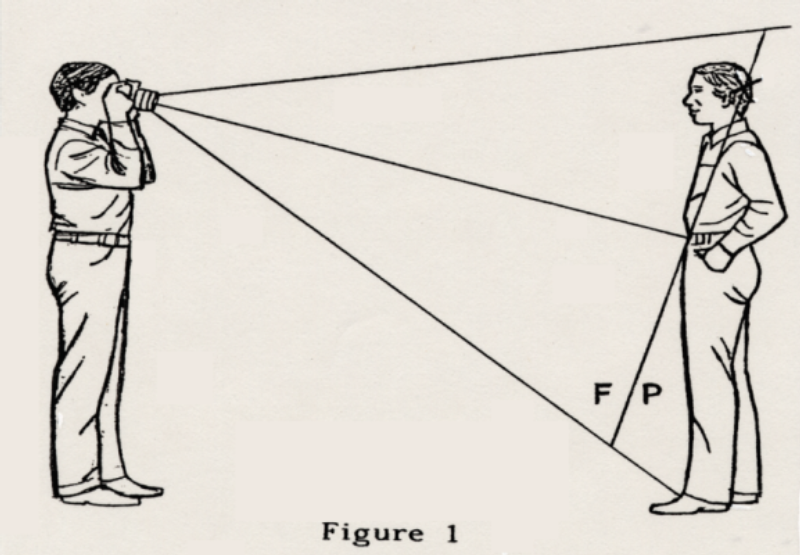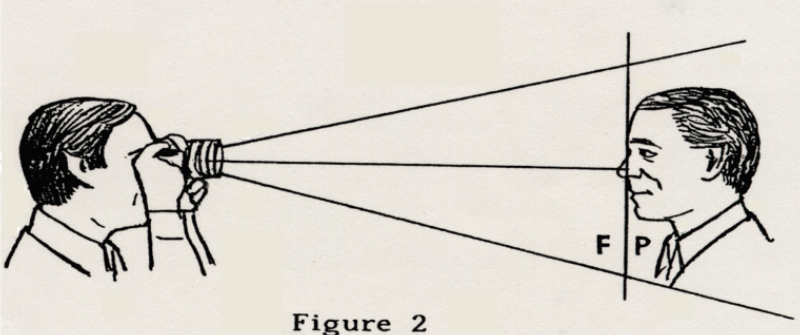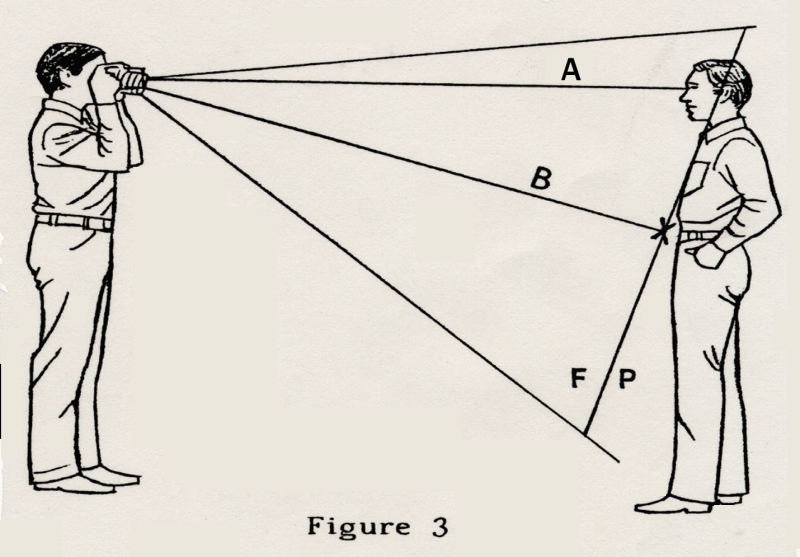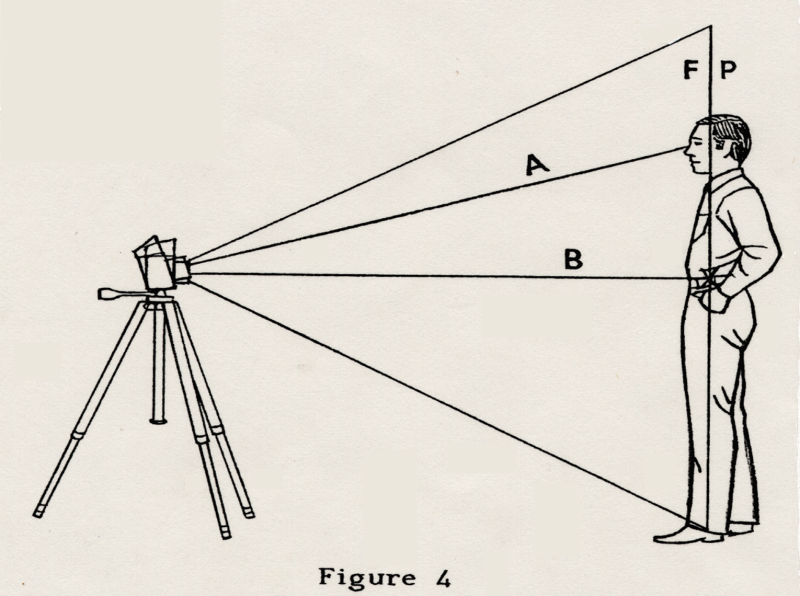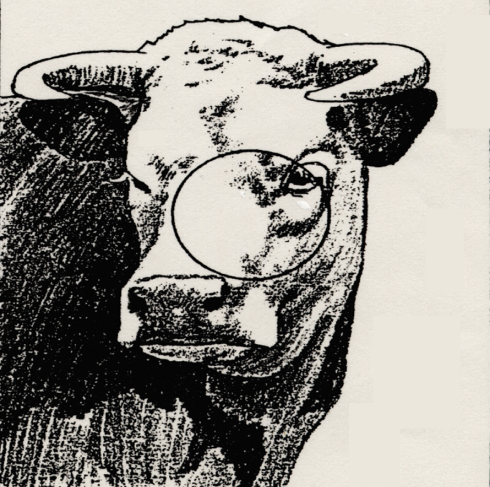THE FLAW IN ALL AUTO-FOCUSING CAMERAS
or
WHY AUTO-FOCUSING CAN NEVER ACHIEVE TRUE
ACCURACY
WITH MOST SUBJECTS
©2006 Mark B. Anstendig All
auto-focusing cameras have a fatal flaw which can never be corrected and which
will prevent them from ever achieving true focusing accuracy with most
photographic subjects. Many of the auto-focusing devices in these cameras are
based on the principles of the “Messraster”, an invention that can achieve
absolutely exact focusing. But the auto-focusing versions will never be able to
duplicate the accuracy of the original invention.
The Messraster, which is the only known device that is able to
achieve focal-point-exact focusing accuracy with all subjects and in all
picture-taking situations, was introduced in
To
understand the importance of the fact that no auto-focusing devices can achieve
precise results, one must first understand that much of what has been believed
to be true about focusing and depth-of-field is proved wrong when it is
possible to place the plane of focus exactly where it is wanted with
millimeter-exact (focal-point-exact) precision. Early in photography, there was
a mistaken belief in optics about how the light rays approached the
focal-point. Instead of a nearly infinitesimally narrow sharpest plane of focus
(focal-plane), it was believed that there was a certain distance within which
everything was equally sharp. Contrary to these early beliefs, good-quality
lenses do achieve resolution essentially equal to a point. True
focal-point-exact focusing can, therefore, be achieved and there are noticeable
and very important differences in every other aspect of a photograph if the
location of the exact plane of focus (focal-plane) is changed even small
amounts.2 In a portrait, for example, there will be a distinct,
noticeable, and important difference if the focal -point is placed exactly on
the pupil of the eye or if it is placed even a few millimeters in front or in
back of the eye.3 This holds true even when the lens is stopped
down.
It
is also very important to understand that, because, physically, there can only
be one sharpest distance from the lens, depth-of-field does not describe
sharpness. It, in fact, describes varying degrees of unsharpness.
Depth-of-field is simply a set of subjective guidelines that try to tell you
how far in front or back of the focal plane the unsharpness will remain
tolerable. There still remains one precise distance from the lens that will be
sharper than all other distances and, more important, only at that distance
will the other aspects of the subject--color tones, size relationships,
etc.--be accurately reproduced. The Anstendig Institute possesses comparison
photographs, made with the Messraster, that prove this and other related points
made in this paper.
If
it is accepted that even small changes in the location of the focal-plane will
change the appearance of the photograph, it follows that the photographer
should be able to place that focal-plane anywhere with pin-point accuracy. It
also follows that, once focusing has been achieved, it is imperative not to
change the distance of the camera to the subject until the exposure has been
made. Therein lies the ultimate, crucial flaw in all auto-focusing systems, a
flaw that can never be eliminated: in all auto-focusing systems, the focusing
sensors are located in the center of the viewing area.4 There are
two basic ways such a centrally located focusing system can be used, and both
result in unavoidable focusing errors with all subjects except those that are
flat and parallel to the camera.
In
figure 1, it is clear that, if the subject is well framed, the auto-focused
lens will be focused on the front of the subject's body. But our institute's
demonstration photographs, made with the Messraster, show that the point that
should be precisely in focus is the subject's nearest eye. If the lens is
focused so that the focal-plane is exactly on the pupil of that eye, the whole
picture will take on a quality called "plasticity" (the effect of
three-dimensionality on a two-dimensional surface), the apparent depth-of-field
will be greater, and there will be less impression of graininess. The
expression of the subject will be more accurate and the photograph will come to
life in a very special way. Figure 2 shows that, in a portrait which includes
only the head, the auto-focus will be on the nose or mouth area, both of which
lie much farther forward than the eyes. Comparison photographs show that, in
addition to the above-mentioned effects, placing the focal-plane in front or in
back of the eye will change, i.e. falsify, the expression.
A
second way auto-focusing could be used would be similar to using focusing aids
in the center of a ground-glass screen. First the center-focusing area of the
screen would be placed on the most important point in the picture. When
focusing has been achieved, a button would lock the focusing mechanism. The
picture can then be framed and taken, without changing the lens setting. But
figures 3 and 4 show that, if the angle of the camera is changed after the
focusing has been achieved, the subject-to-camera distance is also changed and
the focus will no longer be on the desired subject point. The fact that, in
figures 1, 3, and 4, the picture will be focused too far back adds to the
misfortune. The important subject point will end up in front of the focal plane
and there is less apparent depth-of-field in front of the focal-plane than
behind it.5 If there must be a focusing error, it would be better to
err towards front-focusing than back-focusing. All manual focusing systems that
are located in the center of the ground-glass suffer from this same built-in
error because of the inability to focus and frame the picture simultaneously.
Another
flaw in current auto-focusing devices is that the measuring area is too large.
The systems measure an area of the subject that is about as large as the
center-circle of most focusing screens. Figure 5 shows that, with most
subjects, this area includes many differing distances. Which one is the sensor
measuring? The nose is far forward and the eye, where the focus should be, is
far back. The sensor can only measure an average for the whole area and the
focus will probably be somewhere around the eyebrows and not on the eye. This
flaw can be overcome by making the measuring area tiny. A measuring area the
size of a dot in the exact center of the screen would solve the problem. But
the problem of precisely focusing on a subject-point without having to change
the angle of the camera to frame the picture can never be solved.
The
only practical location for the focusing area in auto-focusing is the center of
the viewing area. That is the only location that allows both horizontal and
vertical use. Therefore, with any auto-focusing system, focusing and framing
cannot be achieved simultaneously and changing the camera-to-subject angle in
order to frame the subject more precisely automatically changes the focus. This
built-in shortcoming of all auto-focusing makes it impossible to achieve any
focusing precision in the bulk of picture-taking situations.
Something
has to be wrong when a focusing system is brought out on the market in
extraordinarily complex, expensive versions that can never be accurate, but the
simplest and cheapest-to-make version, which can achieve absolute accuracy with
all subjects no matter where the subject is located in the viewfinder, is
suppressed. It should be emphasized that it is the focal-point-exact focusing,
not how it is achieved, which makes the big difference in picture taking and
determines the outcome of all other elements of the picture.6 If any
photographers have other means of achieving absolutely accurate placement of
the plane of focus wherever one wants it, they do not need the Messraster. But
no other available device offers anything approaching the Messraster's
accuracy.
Photographers
should be provided with some means of placing the precise plane of focus
anywhere they want it, whether or not they choose to use it. Without that
ability, all picture-taking is pure chance and no one can be sure of the final
result. That is the present state-of-the-art in all photography. Even the most
expensive cameras, with jewel-like precision in all other technical aspects,
cannot precisely locate the plane of precise focus.
Since
the Messraster is the only known patent that lays claim to absolute,
focal-point-exact focusing precision and is no more difficult to manufacture
than most SLR focusing screens, it should finally be made available to those
who care about controlling all of the elements in their photographs. The reason
it has not been made available is that it would invalidate much of today's
technology and make many clear the truth about many present systems, such as
auto-focusing, in which billions of dollars have already been invested.
Some
people will, of course, still place the ease of operation of auto-focusing
above any real focusing accuracy. But, many would change their minds if they
knew the truth. There will always be people who want to achieve the best
possible results. Those people are being let down by an industry that could
provide such a means, but, instead, propagates old, wrong information which
camouflages the failings of their focusing systems.
1 The
Anstendig Institute's papers on focusing describe the "Messraster",
describe why focal-point-exact focusing makes a great difference when one can
achieve it, explain the history of the Messraster and make clear why it was
kept off the market.
2 The Anstendig Institute's papers explain in detail that there is
a great difference in any photograph when the plane of exact focus
(focal-plane) is changed even a small amount and that every other aspect of the
photograph, including the impression of three-dimensionality (plasticity), the
rendering of color tones and the apparent graininess, changes when the placement
of the focal-plane is changed.
3 When the face is turned so that the eyes are not at equal
distances to the camera, the focus should usually be placed on the nearest eye.
4 While it is conceivable to have more than one, switch -selectable, focusing area in the viewing area,
manufacturing such an arrangement would be extremely difficult. The limit would
probably be three focusing areas, in the center, upper and lower picture areas.
Such an arrangement, while better than one area, would still not match the
flexibility of the Messraster and operating such a system would probably be
confusing. The extra operating problems would obviate any advantages of
auto-focus.
5 Depth-of-field relationships are approximately 1/3 in front and
2/3 in back of the focal-plane.
6 The Anstendig Institute's papers give detailed explanations why
all other picture elements are determined by the placement of the focal plane.
In
all illustrations, the plane of focus is labled FP, for focal plane.
Figure
1: If the whole figure is framed, the center-focusing section will be on the
man's belt. The plane of focus will be far behind the eyes.
Figure
2: If the head is framed for a typical portrait, the center-focusing section
will be on the nose, i.e., the plane of focus will be too far forward. (See
Figure 5)
Figure
3: (Lines A and B are the same length.) First focusing
is accomplished and locked in place while the center-focusing section is on the
eye (line A). Then, when the picture is framed (line B), the plane of focus
will be in front of the subject's waist, but behind the eyes.
Figure
4: This is the same as Figure 3 with the camera at a lower angle. On the body,
the plane of focus is farther back. But it is also too far back on the head.
Figure
5: This is the same as Figure 2, but from the front. Obviously, many differing
planes of distance are being read simultaneously by the auto-sensor (nose,
mouth, eyes, etc.).
The Anstendig Institute is a non-profit, tax-exempt, research institute that was founded to investigate stress-producing vibrational influences in our lives and to pursue research in the fields of sight and sound; to provide material designed to help the public become aware of and understand stressful vibrational influences; to instruct the public in how to improve the quality of those influences in their lives; and to provide the research and explanations that are necessary for an understanding of how we see and hear.
|
